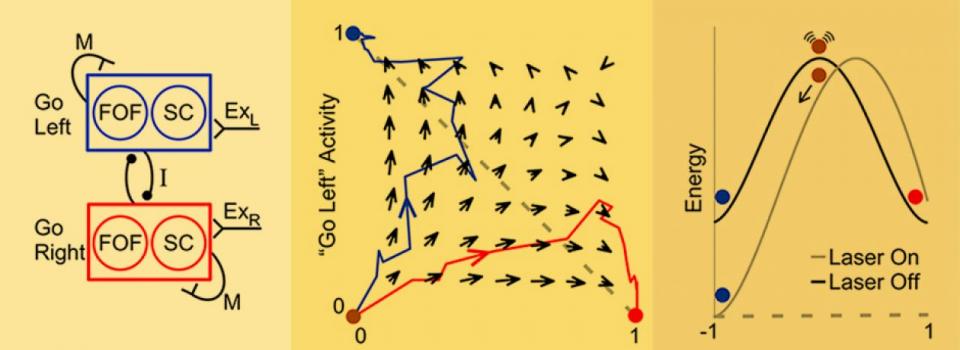Oct 23 2015
Published by
NYU Shanghai

In an example of innovative scholarship, recently published in Neuron, Chuck Kopec, Jeffrey Erlich (now at NYU Shanghai), and Bingni Brunton (now at University of Washington), working in Carlos Brody’s lab at Princeton University, took advantage of optogentics, a new tool developed by co-author Karl Deisseroth (Stanford University), to provide the first direct causal evidence of an important theory of memory, known as "attractor dynamics”.
When we remember a phone number in our heads while looking for pen to write it down, we use "short term memory". It is "short-term" because after we write it down, we forget the number. It is thought that neurons in the prefrontal cortex provide us with short-term memory. Damage to the prefrontal cortex results in short-term memory deficits, and neurons there have persistent firing patterns while specific memories are held in mind.
"Attractor dynamics", which is just a way to say that certain patterns of activity are stable, is the dominant theory of how the persistent activity is generated. Historically, the tools available to neuroscientists have limited their ability to directly test this "attractor theory of short-term memory".
This technique, optogenetics, allowed them to control the activity of neurons on a millisecond timescale, using light-activated channels that were taken from algae and inserted into the neurons using a specially designed virus. Perturbing neurons in the frontal orienting fields of the prefrontal cortex shifted behavior consistent with the attractor model. Somewhat surprisingly, an equivalent effect was also observed when perturbing neurons in the superior colliculus, an evolutionarily old brain area which is not thought to play a role in short-term memory. This suggests that cognitively processes operate through loops that include both "new" and "old" brain regions.


